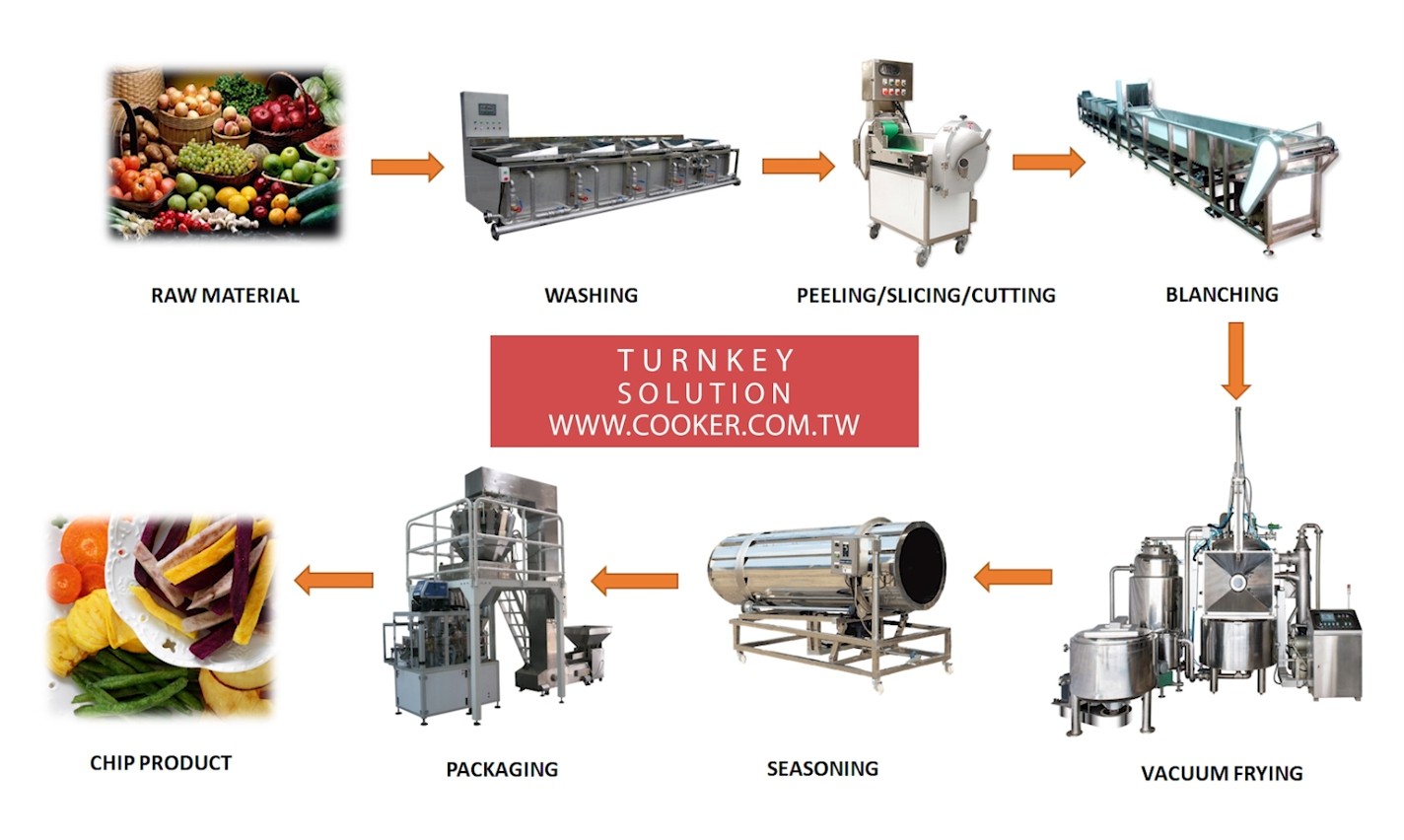WHILE Taiwan’s snack food industry continues to expand, greater emphasis on a healthier lifestyle fuels consumer interest in healthy foods. As trends point to the fusion of leisure and nutrition to reflect consumers’ need to enjoy themselves while keeping healthy, a new snack favourite is emerging: vacuum-fried foods.

Jing Charng Tane Enterprise Co. Ltd, a specialist in food, beverage, pharmaceutical and chemical processing equipment manufacturing, enables food manufacturers to join this trend with its growing line of vacuum frying equipment and turnkey solutions. Backed by more than 30 years of experience in equipment manufacturing and in-depth knowledge of the Taiwan food industry, the company can provide both standard models and customised designs to meet diverse client needs. All its equipment are made in Taiwan.
Jing Charng Tane has been in the Taiwan food industry for several decades now and have closely followed market trends and manufacturing requirements. This growing trend for fun yet nutritious foods is yet another testimony to how this market continues to evolve. The company sees this as opening new opportunities for both equipment and food manufacturers and is therefore committed to growing its line of low-temperature vacuum frying machines.
Low-temperature vacuum fried foods
Jing Charng Tane notes a steady expansion in the supply and diversity of low-temperature vacuum fried foods in Taiwan. The selection now comprises fruit and vegetable crisps, rhizomes and seafoods. Foods such as shallot puff pastries produced using traditional high-temperature frying can also be made into crispy items using low-temperature vacuum frying.
For fruit and vegetable crisps, fresh fruits and vegetables are the main raw materials. These can be apples, bananas, pineapples, jackfruit, onions, mushrooms and okra. Jing Charng agrees using in-season or easy-to-obtain fruits and vegetables makes for high-value products.
With low-temperature vacuum frying, the fruit or vegetable is fried whilst also being dehydrated at the same time to produce a fruit or vegetable chip. This guarantees a delicious and nutritious end-product, according to the company.
Vacuum fried rhizomes can include potatoes, sweet potatoes and taro. For seafoods, all kinds of seafoods can be used, including shrimp, squid, crab and even small fish.
Red shallot oil, shallot puff pastries and garlic are traditionally fried using high temperature. These can be turned into crispy foods using low-temperature vacuum frying with their original colour retained. The oil will not deteriorate easily and can be reused as the frying temperature is lower than 120o Celsius.
Vacuum crisp foods are produced using low-temperature vacuum frying. This requires a closed and decompressed environment to ensure the raw materials are dehydrated. This way, we can retain the original colour of the food and produce a special mouthfeel.
With the frying done in a vacuum, the boiling point of water is reduced and the water content of the food being fried evaporates as the oil transfers heat, resulting in a crispy output. The oxygen-free state of the vacuum frying prevents rancidity, browning, and the oxidative deterioration of the oil and product, allowing the fried food to keep its flavour and colour. Food degradation caused by fats is also greatly reduced.
Low-temperature vacuum frying is done at 90o to 110o Celsius. This is significantly lower than the temperature needed in traditional high-temperature frying at between 160 degrees and 185o Celsius.
Low-temperature vacuum frying definitely has a nutritional value. Starch-based foods such as sweet potato, taro or plain potato are generally fried or baked at temperatures higher than 120o Celsius, which produces a large amount of acrylamide, a kind of chemical that has been shown to have adverse effects on humans in animal experiments, says the company.

Wide range of vacuum frying equipment
Jing Charng’s growing portfolio of equipment for vacuum products consists of vacuum rapid cooling machine, vacuum concentrator, vacuum emulsifier, vacuum fryer, vacuum U-type mixer, vertical steam mixer, hydraulic mixer and gas cooker.
The company’s vacuum frying equipment line features a human-machine interface panel and can record the process parameters of each batch of production to establish a product history and help with process monitoring. The machines, which have a patented design, maintain the ultra-high vacuum state of the fryer for better end-product crispness. The frying tank, oil storage tank, filtration system, multi-tube heat exchanger and piping are all made of SUS304 stainless steel.
The vacuum frying equipment can be used for a variety of agricultural and seafood products such as potatoes, shiitake and straw mushrooms, edamame, apples, bananas, squids and shrimps.
When these products – and more – are vacuum fried at low temperature, food deterioration is addressed as both the oil and finished product last much longer. The oil consumption is less compared to traditional frying so that means cost savings. Most importantly, the finished product has low oil content so it’s considerably more nutritious whilst also being delicious and fun to eat because of the crispness and texture, according to Jing Charng.
JCT41 vacuum fryer
Jing Charng’s JCT41 vacuum fryer can accommodate from 6kg to 120kg per batch. It comprises a frying tank, vacuum oil storage tank, filter tank, vacuum machine and deoiling unit.
The first to be used with an injector to achieve high vacuum without using an ice water machine, the vacuum fryer does not need an extra chiller. It can be used with a water-saving system and will not involve additional water consumption.
The fully automatic fryer is ideal for fruits, vegetables and various seafood products. With the oil to be used in a low-temperature state, the fryer ensures no oil deterioration and thereby saves on oil as well.
Professional vacuum frying machines not only improve frying efficiency but reduce energy consumption at the same time.














